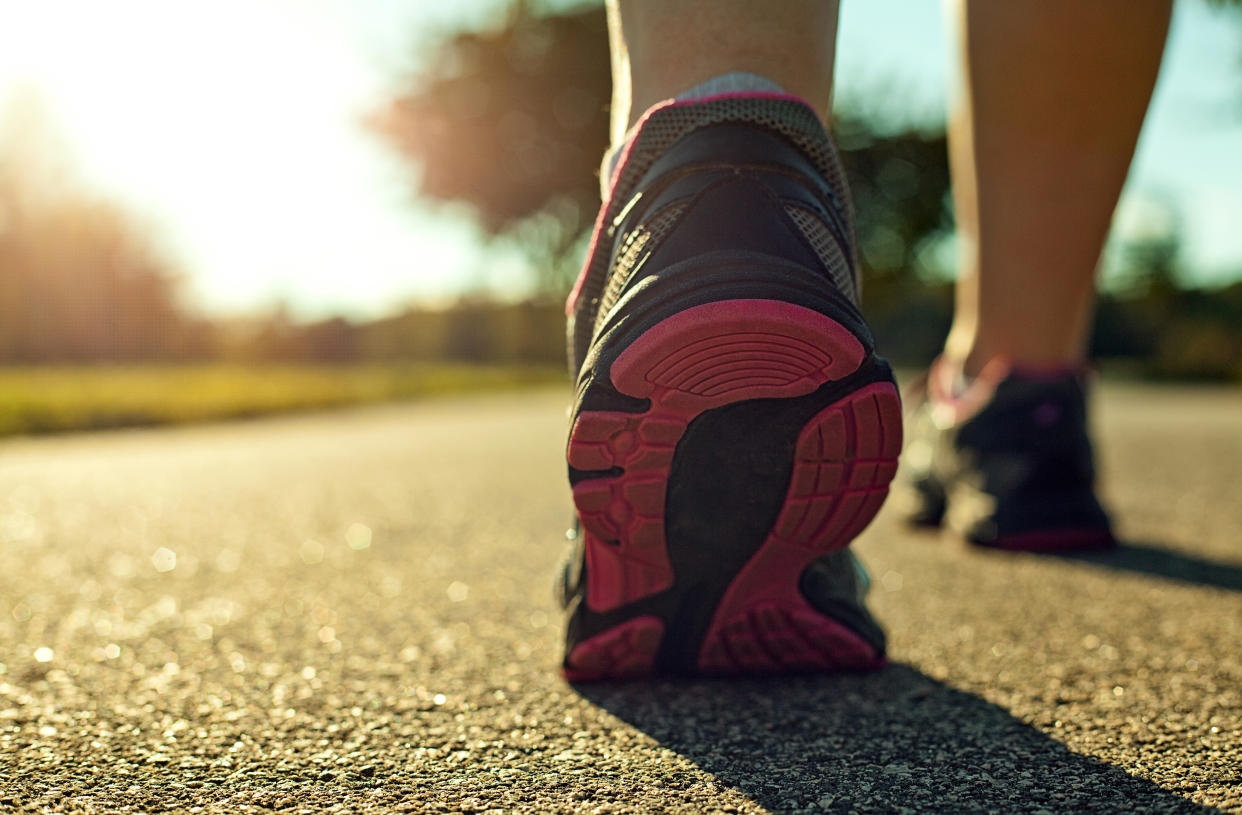Forget 10,000 steps a day — here’s what to focus on instead

Did you get your steps in?
You’ve probably heard that taking 10,000 steps per day is the key to health and longevity. But, according to one expert, there’s another number you should be keeping in mind: 30.
Heather Milton, an exercise physiologist at NYU Langone Health, says that it’s not about steps, it’s about how long you’re moving at a moderate intensity level.
“The sweet spot for breaking up sedentary time [is moving] every 30 minutes. If you’re walking, your steps are contributing to that [and that’s] helping your health,” she explained to HuffPost.
Rather than focusing specifically on steps, 30 minutes of moderate activity should be your objective for daily burn. Thirty is also the maximum number of minutes you should stay seated or sedentary during the day, Milton advised.
The exercise expert explained that the standard of 10,000 steps is more aesthetic than athletic. The number is based on the Manpo-kei pedometer designed in Japan in the 1960s. According to Milton, the Japanese character for 10,000 looks like a person walking, thus the name and the number became a marketing tool with no true basis in medical or scientific research.
Despite the lack of evidence, 10,000 has remained the gold standard for everyday exercise.
Milton told HuffPost, “The idea is if you’re getting the right intensity of that [10,000-step] walk, then you’re getting the CDC and ACSM recommended amount of aerobic exercise per day because it equates to about 30 minutes of moderate-intensity activity.”
She is referring to current guidelines from the Centers for Disease Control and Prevention and recommendations from the American College of Sports Medicine, both of which say you should have at least 150 minutes of moderate-intensity activity per week, plus two days of strength training for optimal fitness.
Here’s how to know you’re getting in the right kind of movement.
The talk test

Not all steps are the same.
Milton explained that to meet the recommended amount of aerobic exercise, the pace of our steps should pass what she calls “the talk test” — meaning that your exercise is intense enough that communication is difficult to maintain.
“If you and I were trying to have a conversation, would you only be able to answer ‘yes’ or ‘no’ to my questions? There’s a threshold dose or intensity dose that then lends towards increasing your health,” she explained. That threshold is 64% to 76% of your max heart rate — meaning that simply getting your steps in by walking around the office or walking to and from your car probably won’t cut it. Instead, you need to get a little bit breathless, feeling your heart rate increase.
Moderate intensity movement includes brisk walking, dancing, gardening, tennis or a leisurely bike ride, according to the American Heart Association.
Steps and standing might save your life

Inactivity is linked to obesity, high blood pressure and an increased risk of cancer and cardiovascular disease, research has shown. Exercise — especially if you’re working out outdoors — can also be a boon for your mental health, according to studies.
The Mayo Clinic recommends finding ways to step it up and stay in motion during the workday, including using a standing desk, positioning work surfaces above a treadmill and taking a walk instead of sitting during a meeting.
Milton explained that counting steps can be an effective tool for measuring physical activity. “If you have a Fitbit or another device that’s counting your steps, you can see how low they are, then you can set goals for increasing it over time,” she said. “It may not be structured exercise, but it is physical activity. And that can help with your metabolism and your overall health.”


